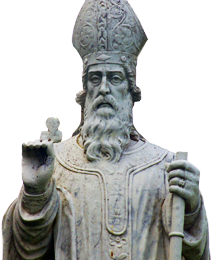
I was included in this year’s Holy Land Coordination Group Pastoral Pilgrimage to represent the Irish Episcopal Conference (IEC) with Bishop William Crean of Cloyne and as a member of the IEC Council for Justice & Peace. The pilgrimage took place from 14 to 19 January 2023. I was privileged to be invited to participate as I was going to the Holy Land, the place where the people of the Scriptures walked and lived their lives. It was my first visit to Jordan. I had visited the Holy Land, specifically Israel, in 1999, as part of a pilgrimage from the Archdiocese of Cashel & Emly. The objectives of this pilgrimage were to offer support to the Christians of Jordan and to highlight the important role that they play in Jordanian society.
I participated alongside the other members of the Holy Land Coordination Group in visiting and praying with parish communities, Caritas, migrants, children with disabilities, youth faith groups and Ambassadors to Jordan. We visited and prayed at the Biblical sites of Madaba, Mt. Nebo and the Baptism of Jesus at the Jordan River guided by the Jordanian Tourist Board. Also, we met with two Christian members of the Jordanian Parliament.
During the pilgrimage, I had a feeling that Jordan, in view of its geographic position and the generous nature of its people is overwhelmed with migrants. I was struck by the fact that 1/3 of the population of Jordan are migrants, mainly Palestinians, Syrians and Iraqis and that the latter do not have refugee status (which affords health care and permits to work). We met Iraqi women who were in a training programme with Fr Mario Cornioli P.P. of the Mar Yousef Pastoral Centre, Jabal Amman where they manufactured clothing with the help of an Italian fashion designer and derived an income by way of a training allowance. Most of the women had unsuccessfully applied multiple times for a visa to the USA, Australia, Canada over 6-8 years. They do not wish to return to Iraq as they do not trust their former neighbours who would have pointed them out as Christians to Islamic State (IS).
On Sunday, 15th January, we divided into different groups to visit parishes. Our group visited The Parish of St. Paul the Apostle, Ajloun, 70 miles north of Amman and joined them for Sunday Mass. The congregation were mainly older with the choir consisting of 5 young people, the last of their contemporaries who had elected to stay in Ajloun as most young people move to Amman or emigrate as economic conditions in Jordan are poor. The Parish Priest, Fr. Saqer Hijazeen, stated that relations with the local Orthodox Christians was not good and that the Latin Catholic community felt under threat from the surrounding Muslim population and therefore socialised within the Church compound. By contrast, we met two Christian members of Parliament later who were adamant that relations between Muslim and Christian politicians were very good and that they worked well together.
It was good to visit the Biblical sites and to appreciate the mosaics depicting events of the Bible that have been found and those refurbished in particular, at St George’s Greek Orthodox Church in Madaba and Mt. Nebo, the site associated with Moses overlooking the Promised Land. We visited the site of the Baptism of Jesus at the River Jordan and celebrated Mass nearby in the Church of the Baptism of Christ at Al-Maghtas, which requires further funding to complete its construction.
On returning home I have a concern for the migrants in Jordan, the Christians in Jordan, and the future of the Christian sites in Jordan. Jordan has a poor economy leading to emigration, in particular, among Christians who are gradually reducing in number. The Christians who make up less than 5% of the total population are made up of different denominations and will struggle to maintain a presence in Jordan.
While Christians and Muslims work well together owning to the benevolent reign of King Abdullah, the relationship with Israel is most difficult as part of Jordan was taken over by Israel and Jordanians cannot travel freely into Israel. Also, a pilgrimage to the Holy Land consisting of Jordan, Israel, Lebanon and Palestine is not feasible due to the restrictions at the borders with Israel.
+ Martin Hayes Bishop of Kilmore
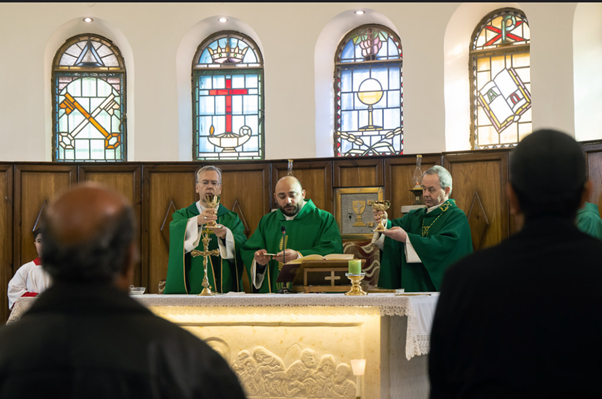 Celebrating Mass in The Parish Church of St. Paul the Apostle, Ajloun, with Fr. Saqer Hijazeen and Bishop Nicholas Hudson (Auxiliary Bishop of the Archdiocese of Westminster, UK)
Celebrating Mass in The Parish Church of St. Paul the Apostle, Ajloun, with Fr. Saqer Hijazeen and Bishop Nicholas Hudson (Auxiliary Bishop of the Archdiocese of Westminster, UK)
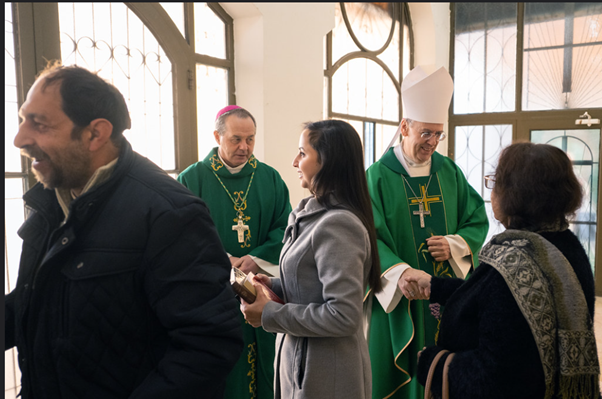
Greeting Parishioners after Mass in The Parish Church of St. Paul the Apostle, Ajloun, with Bishop Nicholas Hudson
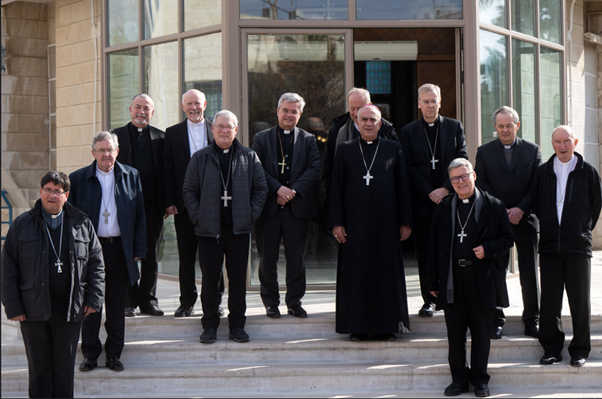
Meeting with Most Reverend Jamel Khader, the Latin Patriarchal Vicar in Jordan
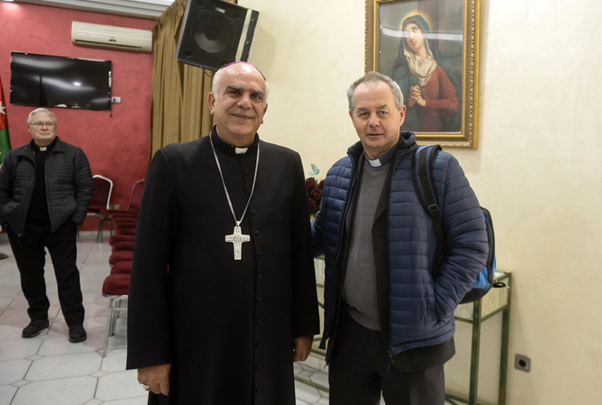
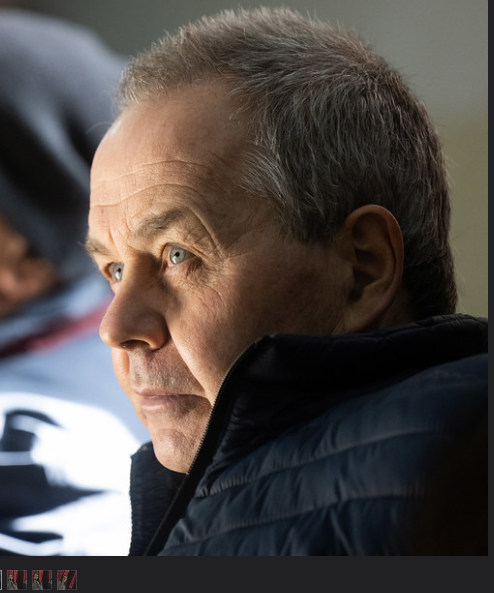
Visit to the Latin School in Madaba for a presentation on the Role of Christian Schools
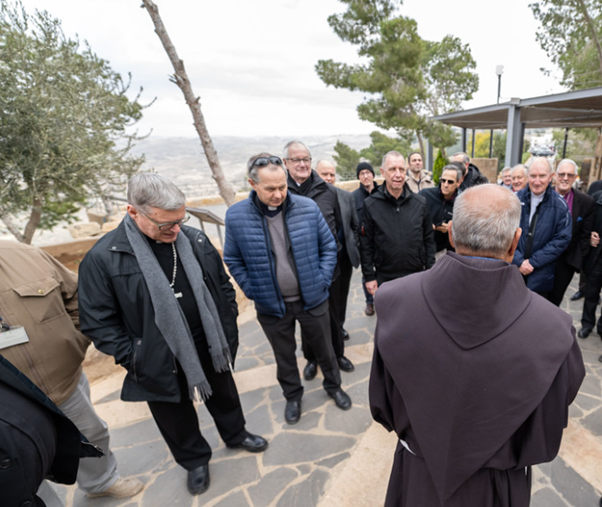 At Mount Nebo – the place where Moses was granted a view of the Promised Land before his death
At Mount Nebo – the place where Moses was granted a view of the Promised Land before his death
 Meeting with local young people
Meeting with local young people
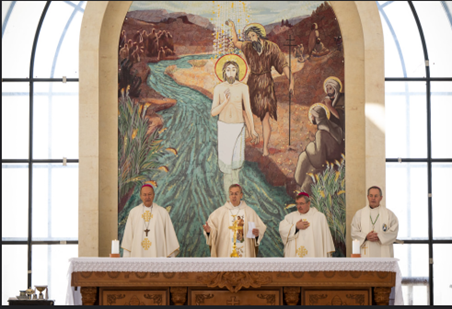 Celebrating Mass at the Site of the Baptism of the Lord
Celebrating Mass at the Site of the Baptism of the Lord
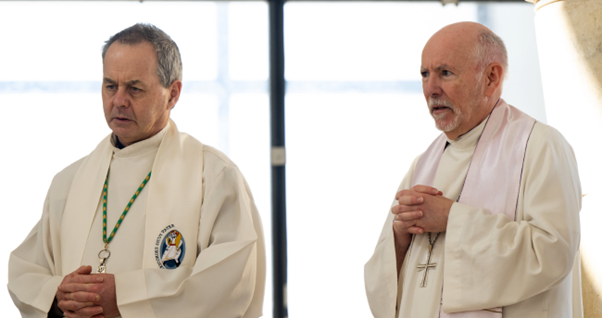 Celebrating Mass at the Site of the Baptism of the Lord with Archbishop William Nolan of Glasgow (Scotland)
Celebrating Mass at the Site of the Baptism of the Lord with Archbishop William Nolan of Glasgow (Scotland)
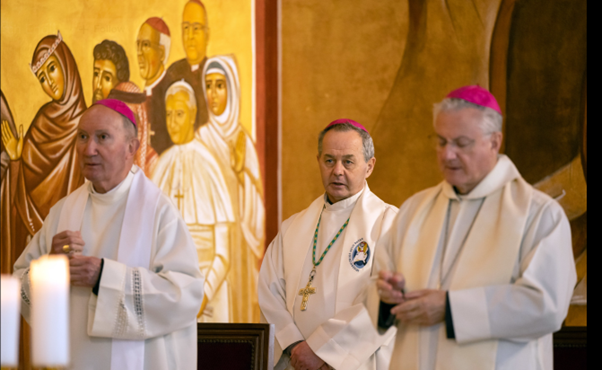 Celebrating Mass in the Church of the Good Shepherd
Celebrating Mass in the Church of the Good Shepherd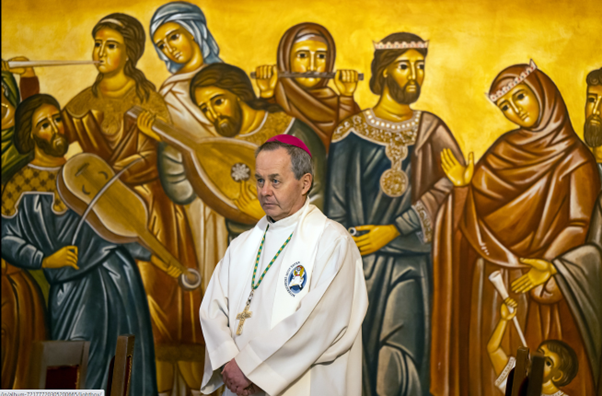
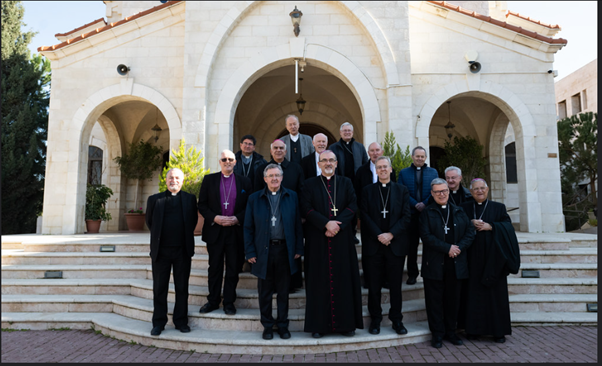
Meeting with the Latin Patriarch of Jerusalem, Archbishop Pierbattista Pizzaballa O.F.M.
https://www.cbcew.org.uk/holy-land-co-ordination-2023/
Photo Credit: Mazur/cbcew.org.uk



